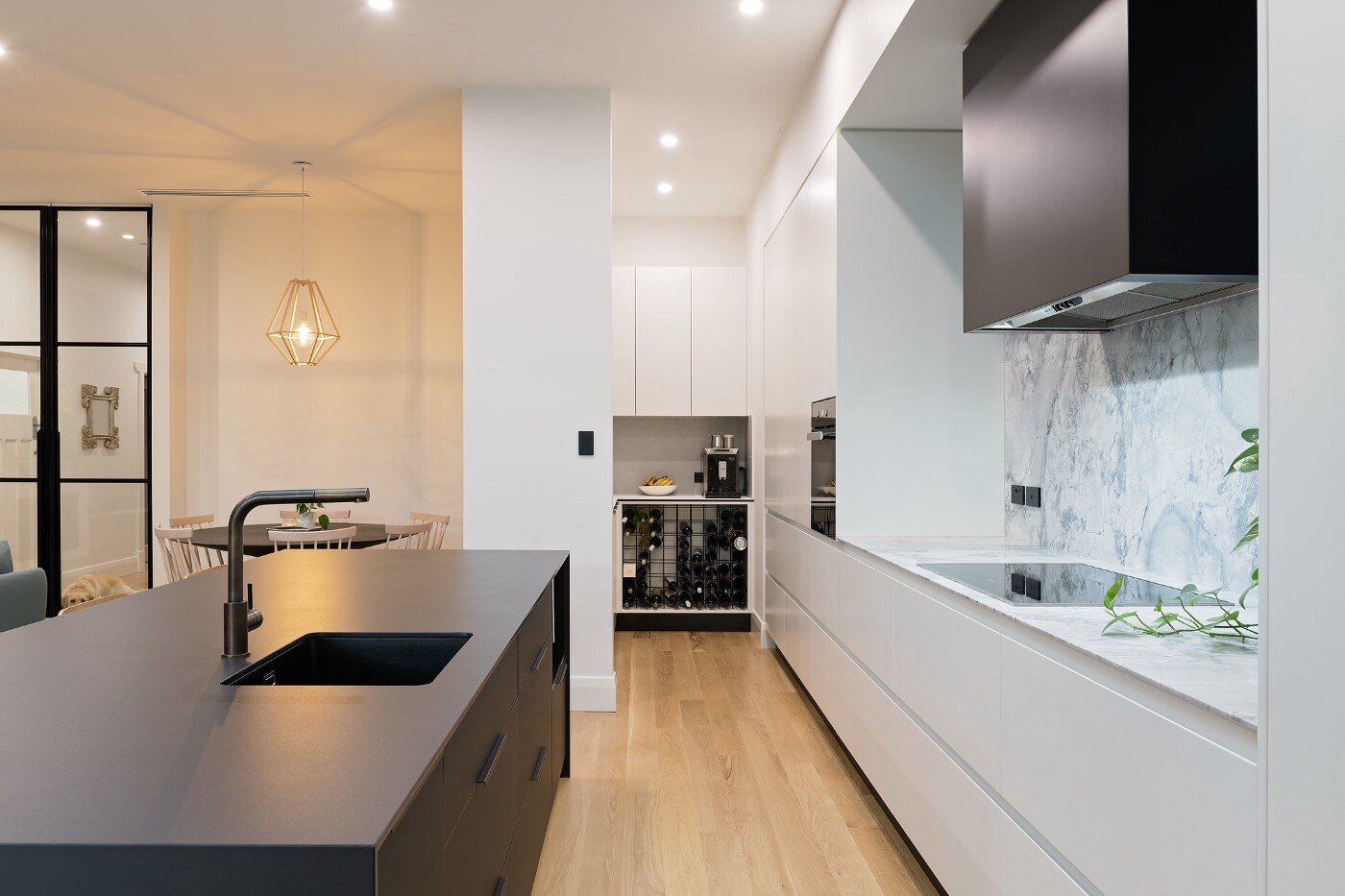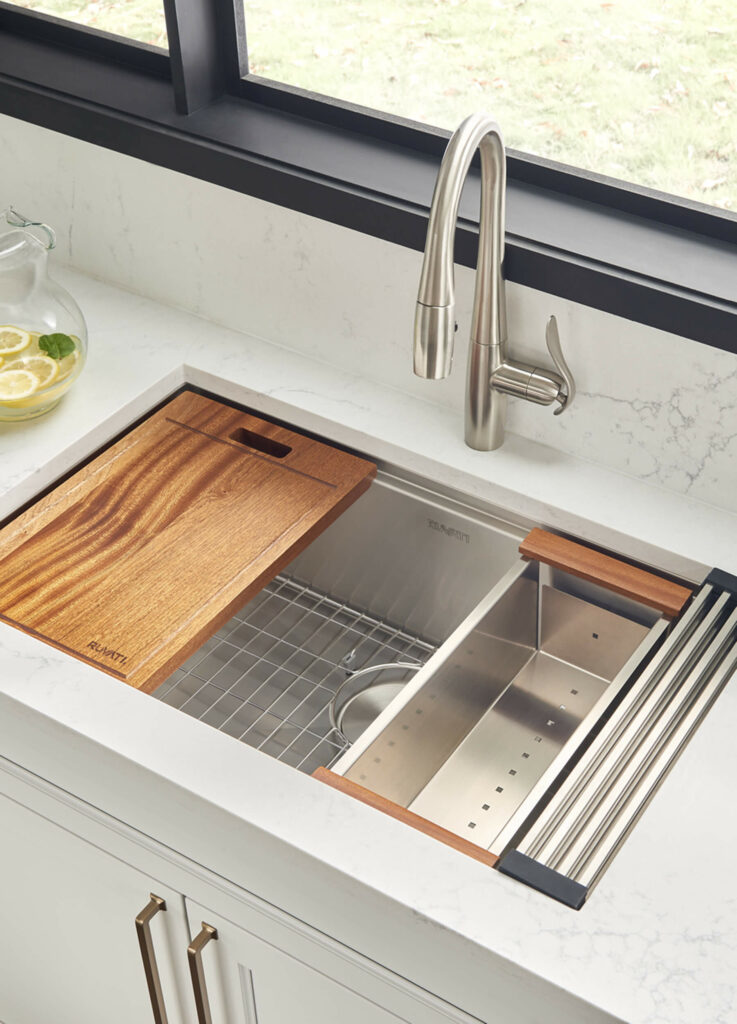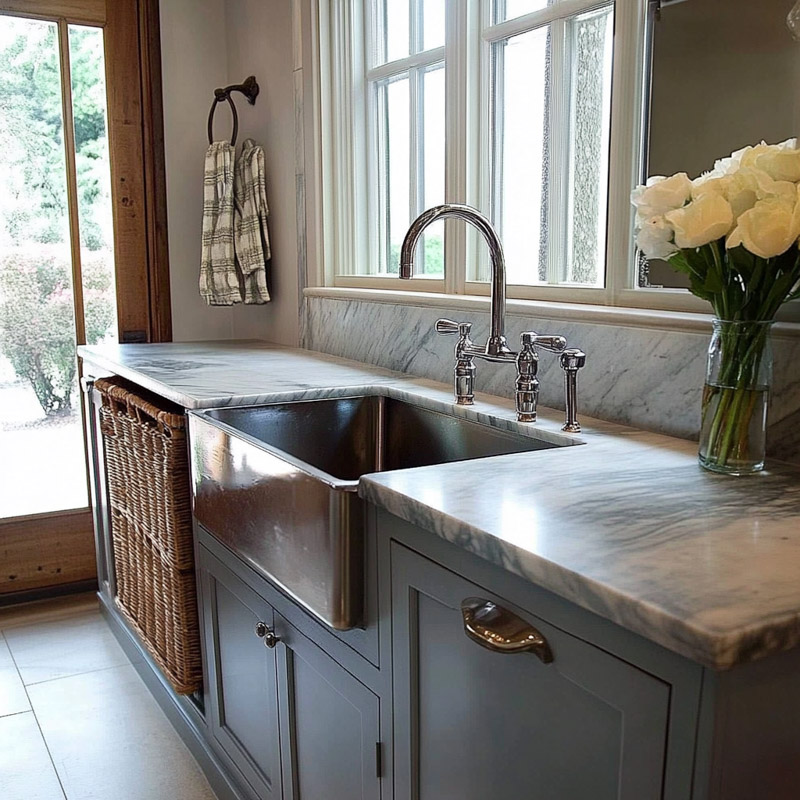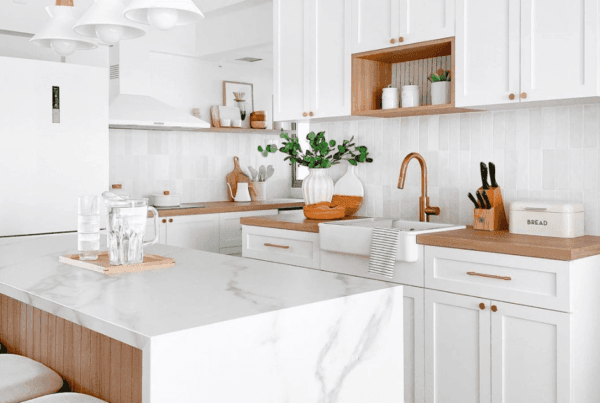In modern kitchen design, the seamless integration of functionality and style is crucial for maximizing efficiency in today’s compact living spaces. This article explores innovative features and materials that enhance kitchen aesthetics while addressing common challenges faced by homeowners, such as limited storage and the need for easy maintenance.
By examining smart technology, sustainable materials, and versatile sink designs, you will discover practical solutions that not only simplify daily tasks but also elevate the overall kitchen experience. Whether you are renovating or simply looking for inspiration, the insights provided here will guide you in creating a kitchen that meets your specific needs.
Table of Contents
Innovative Sink Designs for Modern Kitchens
In contemporary kitchens, the sink has evolved from a mere functional element to a centerpiece that enhances both the aesthetics and functionality of the space. Innovative sink designs cater to the demands of modern lifestyles, combining style, practicality, and new technology. Let’s explore some of the most exciting trends and ideas in sink design that are redefining kitchens today.
1. Statement Sinks
A sink can be a striking focal point in your kitchen. Statement sinks, often characterized by distinctive shapes and colors, challenge conventional design norms. Whether it’s a deep farmhouse style or a sleek circular basin, statement sinks can add a layer of sophistication to any kitchen.
- Materials and Colors: Bold finishes and exotic materials like copper or black matte have gained popularity, allowing homeowners to express their personality through their kitchen sink choices.
- Unique Shapes: From asymmetrical designs to oversized basins, non-traditional shapes can make for a daring yet practical choice.
2. Multi-Functional Sinks
Today’s busy kitchens require multi-functional fixtures that go beyond just washing dishes. Advanced designs incorporate features that facilitate various tasks, ensuring that every inch of space serves a purpose.
- Integrated Cutting Boards: Some sinks come equipped with built-in cutting boards that fit over the sink, allowing for seamless food prep.
- Pull-Down Sprayers: These versatile faucets extend to reach every corner of your sink and can accommodate larger pots and pans.
- Colander Add-Ons: Built-in colanders enable efficient rinsing of fruits and vegetables while conserving space in your kitchen.
3. Seamless Sink Designs
As minimalist styles continue to dominate kitchen design, seamless sinks have emerged as a popular option. These sinks are often integrated directly into the countertop, creating a sleek and unbroken surface.
- Material Continuity: Seamless sinks can be made from the same material as the countertop, ensuring a uniform appearance that enhances the overall design of the kitchen.
- Easy Maintenance: The absence of seams minimizes the chances of dirt accumulation and simplifies cleaning processes.
4. Eco-Friendly Designs
The growing emphasis on sustainability has led to innovative sink designs that prioritize eco-friendliness. From water-saving faucets to recyclable materials, green sink solutions are on the rise.
- Water-Saving Technologies: Fixtures with low-flow aerators help reduce water usage without compromising on performance.
- Recyclable Materials: Sinks made from recycled materials not only serve a functional purpose but also contribute to environmental conservation.
 5. Sink Accessories for Enhanced Versatility
5. Sink Accessories for Enhanced Versatility
As kitchens embrace modern aesthetics, the integration of accessories into sink designs has become increasingly prevalent. Accessories provide functionality while maintaining a chic look.
- Sink Grids: These protect the sink’s surface from scratches while allowing for easy rinsing and drying of dishes.
- Sinks with Built-In Drying Racks: Some designs feature drying racks that cleverly fold away when not in use, making them both practical and space-efficient.
For homeowners looking to upgrade their kitchen with innovative sink designs, it’s essential to consider both functionality and aesthetics. The right sink can transform the heart of the home into a haven of style and efficiency.
For more inspiration on modern kitchens and innovative designs, check out this informative article on smart space-saving kitchen ideas.
Maximizing Functionality with Space-Saving Features
In today’s world, where urban living spaces are increasingly compact, maximizing functionality has become a pivotal aspect of modern kitchen design. Space-saving features not only enhance usability but also contribute to a streamlined and aesthetically pleasing environment. By incorporating innovative design solutions, homeowners can transform small kitchens into efficient workspaces that cater to their culinary and entertaining needs.
Creative Storage Solutions
One of the most effective ways to optimize a kitchen’s functionality is through creative storage solutions. In small kitchens, vertical space is often underutilized. Consider the following ideas:
- Open Shelving: Installing open shelves not only provides accessible storage for everyday items but also creates an open and airy feel. Use decorative containers or baskets to keep the clutter at bay while displaying attractive dishware.
- Magnetic Strips: Magnetic strips can hold knives and metal utensils, freeing up valuable drawer space. This practical solution both maximizes storage and creates an eye-catching display.
- Pull-Out Cabinets: Incorporating pull-out cabinets can significantly enhance functionality without requiring additional floor space. These cabinets can be designed to store everything from spices to cutting boards, providing efficient access at a moment’s notice.
- Corner Drawers: Traditional corner cabinets often remain underutilized. However, converting them into corner drawers allows for easy access to items that would otherwise be challenging to reach.
 Smart Layouts for Efficiency
Smart Layouts for Efficiency
The layout of a kitchen greatly impacts its functionality. Maximizing space while ensuring efficient workflow can be achieved through clever design:
- Galley Kitchens: Ideal for tight spaces, galley kitchens offer streamlined workflow. Placing appliances opposite each other allows for easy movement between prep areas and cooking stations.
- Multi-Functional Islands: If space allows, consider a kitchen island that serves multiple purposes—prep space, dining area, and storage. Opt for designs that include built-in shelves or cabinets to optimize functionality.
- Fold-Down Tables: For kitchens where dining space is limited, a fold-down table attached to the wall can provide an extra eating area when needed without permanently occupying floor space.
Underutilized Spaces
There are often overlooked areas in kitchens that can be ingeniously repurposed for storage:
- Above the Fridge: This space is frequently ignored, but installing custom shelving or cabinets can transform it into a great storage solution for rarely used items.
- Under-Sink Storage: Utilizing the area beneath the sink for storage can be optimized with tiered organizers or pull-out bins for cleaning supplies.
- Side Panels of Cabinets: Installing hooks or magnetic strips on the side panels of cabinets can provide additional storage for utensils or cutting boards.
Transformative Furniture
Furniture plays a crucial role in maximizing functionality while ensuring an efficient kitchen design:
- Stackable Chairs: During gatherings, stackable chairs can be brought out for use and easily stored away when not needed, freeing up space.
- Benches with Storage: Incorporate benches that serve as seating and come with built-in storage for items like dining accessories or cookbooks.
- Bar Carts: A mobile bar cart can serve multiple purposes, acting as additional countertop space for food prep or as a mobile serving station for entertaining.
Conclusion
Incorporating space-saving features into your kitchen design not only maximizes functionality but also elevates your culinary experiences. From clever storage solutions to innovative layouts and transformative furniture, there are myriad ways to enhance the usability of your space. By prioritizing these elements, you can create a kitchen that is both practical and inviting. For more ideas on optimizing small kitchen spaces, consider checking out this helpful guide for further inspiration.
Choosing Materials that Enhance Aesthetic Appeal
When it comes to kitchen design, the materials you choose play a pivotal role in enhancing the overall aesthetic appeal. Materials not only contribute to the visual interest of your space but also reflect your personal style and the functionality of the kitchen. In this section, we’ll explore a variety of materials that are trending in modern kitchens, their unique characteristics, and how they can elevate your kitchen’s design.
1. Natural Stone: Timeless Elegance
Natural stone has long been a favorite for countertops, backsplashes, and flooring due to its luxurious finish and durability. Options like granite, marble, and limestone bring in distinct textures and colors that can serve as a stunning focal point in your kitchen.
- Granite: Known for its toughness, granite countertops often feature unique patterns, making each slab a work of art.
- Marble: While more porous and requiring maintenance, marble offers an unmatched elegance, especially in white or soft-hued variations.
- Limestone: This softer stone can provide a rustic feel, seamlessly fitting into farmhouse or country-style kitchens.
2. Warm Wood: Bringing Nature Indoors
Wooden elements, whether in cabinetry, flooring, or countertops, introduce warmth and texture to a kitchen. Different types of wood exhibit various finishes and grains that can complement numerous design styles.
- Reclaimed Wood: Eco-friendly and full of character, reclaimed wood adds history and unique stories to your kitchen space.
- Maple: Known for its clean look and light color, maple is versatile and can fit into both modern and traditional kitchens.
- Walnut: Darker and richer, walnut provides a dramatic contrast when used alongside lighter materials.
3. Glass: Modern Sophistication
Glass is a popular choice in contemporary kitchens, often used for backsplashes, cabinet doors, and lighting fixtures. It can add a sleek and spacious feel, reflecting light and making the area appear larger.
- Frosted Glass: Provides privacy while maintaining a modern aesthetic, perfect for cabinet doors.
- Colored Glass: Custom hues can bring a pop of color to your kitchen décor, enhancing the artistic flair of your design.
- Mirror Glass: Reflective surfaces can add depth and can help brighten up smaller spaces.
4. Innovative Metal Finishes: A Touch of Glamour
Incorporating metal finishes is an excellent way to add texture and class to your kitchen. Metals such as stainless steel, copper, and brass are making a significant comeback in modern designs.
- Stainless Steel: A staple in kitchens, it is not only functional but gives a sleek, professional look.
- Copper: Known for its rich color and natural antimicrobial properties, copper can be used in sinks, fixtures, or as accents.
- Brass: This warm, yellow metal is perfect for hardware and fixtures, blending vintage and modern styles beautifully.
5. Sustainable Materials: Eco-Chic Choices
The trend towards sustainability is influencing kitchen design, with many opting for eco-friendly materials. Selecting sustainable choices reflects a commitment to the environment while maintaining style.
- Bamboo: A highly renewable resource, bamboo is not only durable but can also add elegance with its unique grain.
- Recycled Glass Countertops: Made from post-consumer materials, these countertops are visually striking and environmentally conscious.
- Concrete: An eco-friendly option that can be molded into any shape, concrete countertops offer a modern look while being durable and long-lasting.
In summary, the materials you choose are fundamental in crafting an aesthetically pleasing kitchen space. Whether you prefer the organic feel of wood, the elegance of natural stone, the modern touch of glass, the warmth of metals, or the sustainability of eco-friendly resources, each option brings its unique charm and character to your culinary haven. By thoughtfully selecting materials that resonate with your design vision, you can create a kitchen that is not only functional but also a true reflection of your style.
For more insights into eco-friendly materials, check out this resource on sustainable building materials.
This article segment maintains a clear focus on materials that enhance aesthetic appeal in the kitchen, offering fresh and unique insights while adhering to SEO best practices. The inclusion of bullet points, paragraphs, and headings improves readability and navigation, making it user-friendly. “`html
Integrating Smart Technology for the Ultimate Convenience
In today’s fast-paced world, the integration of smart technology in home kitchens not only enhances convenience but also makes everyday cooking tasks more efficient than ever. By incorporating innovative devices and systems, homeowners can transform their kitchens into highly functional and user-friendly spaces. Let’s explore how these advancements are shaping modern kitchen design.
Smart Appliances: The Heart of a Connected Kitchen
Modern kitchens are increasingly dominated by smart appliances that connect to Wi-Fi and can be controlled remotely. From refrigerators that monitor food inventory to ovens that can be preheated via a smartphone app, these devices reimagine traditional cooking and food management.
- Smart Refrigerators: Many of the latest models feature touch screens that show recipes and nutritional info, and can even alert you when groceries are running low. Notably, some smart fridges can create shopping lists or connect to online grocery stores.
- Intelligent Ovens: These appliances can suggest the perfect cooking time and temperature based on the dish you’re preparing. Wi-Fi connectivity allows you to monitor your cooking progress remotely, providing peace of mind for busy households.
- Smart Dishwashers: With soil sensors and eco-friendly wash settings, modern dishwashers can optimize water and energy usage. Many offer app controls to start cycles on your schedule, making it easy to maintain a clean kitchen without interrupting your daily routine.
Voice Assistants: Hands-Free Cooking Help
Imagine cooking dinner while simultaneously managing your to-do list or adjusting the lighting—all without ever touching a button. Voice assistants have become invaluable in smart kitchens, helping streamline multi-tasking.
- Recipe Assistance: Platforms like Amazon Alexa or Google Assistant can provide step-by-step cooking instructions, adjusting for those moments when your hands are too messy to handle a phone or tablet.
- Kitchen Management: Setup timers, control smart plugs for small appliances, or make instant shopping lists—all through simple voice commands!
- Entertainment: Enjoy your favorite music or podcasts while cooking, enhancing the overall experience and making chores feel less like work.
Smart Lighting Solutions for Ambiance and Safety
Effective lighting is crucial in any kitchen, and smart technology offers customizable solutions that enhance both appeal and functionality.
- Adjustable Brightness: Smart bulbs allow you to dim or change the color temperature of your kitchen lights with just a few taps or voice commands, creating the perfect atmosphere for cooking, entertaining, or dining.
- Motion Sensors: Installing motion sensor lights can improve safety, ensuring that your kitchen is always brightly lit when you enter, reducing the risk of accidents.
Smart Kitchen Hubs: Central Control at Your Fingertips
Smart kitchen hubs can act as the nerve center for all your smart devices, providing a unified interface for control and planning.
- Scheduling and Integration: These devices help you manage your meal prep, sync with your grocery list, and even control your other smart appliances, all from one place.
- Smart Recipe Management: Engage with interactive recipe features that adjust ingredient quantities based on the number of servings you want.
By integrating these **smart technologies**, homeowners can bring a level of skill and accessibility into the kitchen that was previously unimaginable. From ensuring meals are cooked to perfection to managing grocery needs seamlessly, the ultimate convenience awaits in every corner of today’s smart kitchens.
For more insights on smart kitchen technologies and their latest innovations, check out this resource. The article explores the integration of innovative sink designs and materials in modern kitchens to enhance functionality and aesthetic appeal. Key features include built-in colanders for space-saving efficiency, seamless sink designs for easy maintenance, and eco-friendly solutions like water-saving faucets. Furthermore, it highlights the importance of selecting materials such as natural stone, wood, glass, and metals that not only contribute to visual interest but also reflect personal style.
To maximize kitchen functionality, homeowners can incorporate creative storage solutions, smart layouts, and transformative furniture. Utilizing smart technology like appliances that connect to Wi-Fi, voice assistants for hands-free assistance, and smart lighting can further enhance convenience and efficiency. Embracing these elements allows for a practical and inviting kitchen space that caters to both culinary needs and design aesthetics.



 5. Sink Accessories for Enhanced Versatility
5. Sink Accessories for Enhanced Versatility Smart Layouts for Efficiency
Smart Layouts for Efficiency

